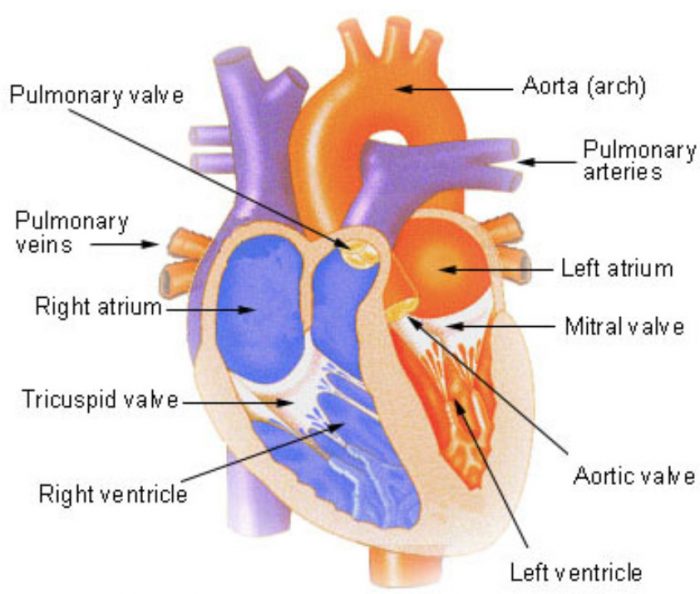

The fibrous pericardium is a loose and strict fitted inelastic sac around the heart. The pericardium is a membranous sac where the heart is enclosed. It can be measured between 12 cm in length and 9 cm in width. It is about the size of the fist and weighs about 300 g in men and 250 g in women. The heart is a hollow, cones shaped muscular organ. The heart is enclosed by the cage formed by the backbone ribs, breast bones, and diaphragm, known as the bony thoracic cage. The lower conical part used to place a little tilted to the left. The heart is situated almost in the middle line of the thoracic cavity between the lungs. Structure and mechanism of the human heart Position of the heart In addition, the pericardial fluid acts as a lubricant between the inner and outer layers of the parietal pericardium. Pericardium protects the heart and anchors it into the chest. The location of the human heart is slightly left of the breastbone and centre of the chest. It supplies oxygen and essential nutrition to different issues and removes the carbon dioxide and other wastes from the blood. This is the simple definition of a heart, which pumps the blood through the vessels and arteries network known as the cardiovascular structure. “The heart refers to a muscular organ, not more than the size of a fist, that is located just behind and left side of the breastbone”. This chapter is designed to define the heart, the structure and mechanism of human nature, and the heart’s function in the human body. It has four chambers, two upper champs, two lower chambers. It produces good blood in the body and refines the bad blood from the body. The heart is a system that maintains and balances the flow of blood by pumping the vessels of the heart. The heart is one of the essential organs in the human body and the brain and lungs.


 0 kommentar(er)
0 kommentar(er)
